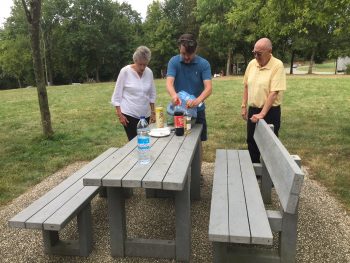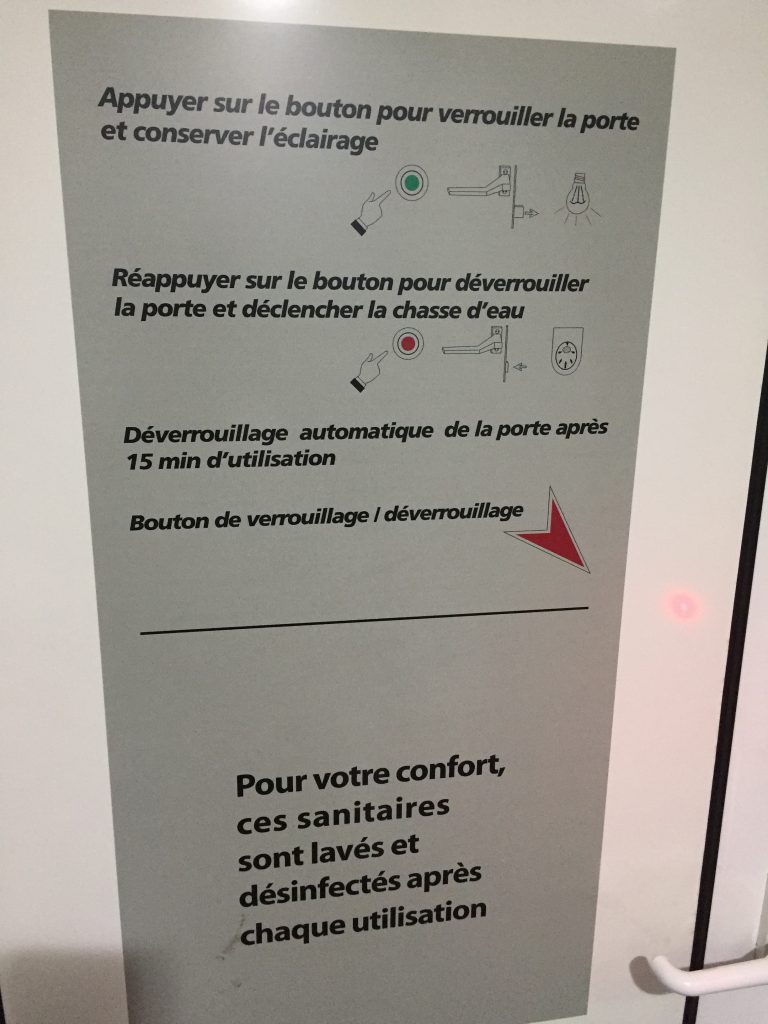Reading Signs in French Posted by Tim Hildreth on Nov 14, 2017 in Vocabulary
A very important skill for traveling abroad is reading signs. This is as true in France as it is in any country. Reading the local signs isn’t generally a matter de vie ou de mort (of life or death), but sometimes it can mean the difference between privacy … and, well, wet shoes.
I love driving through France. In addition to the fact that you get to see so much beautiful country, they have so many well equipped aires de repos (highway rest stops/rest areas). Many of them include facilities pour faire des pique-niques (for picnicking) and plenty of toilettes publiques (public rest rooms). On my recent travels with my parents (who don’t speak or read French) one sign in particular reminded me of the importance of reading signs. As a public service to anyone who might find themselves in need, the sign and translation are below!| Appuyer*^ sur le bouton pour verrouiller la porte et conserver l’éclairage | Press^ the button to lock the door and keep the lights on |
| Réappuyer* sur le bouton pour déverrouiller la porte et déclencher la chasse d’eau | Press^ the button again to unlock the door and to flush the toilet |
| Déverrouillage automatique de la porte après 15 min d’utilisation | The door will automatically unlock after 15 minutes of use |
| Bouton de verrouillage / déverrouillage | Button to lock / un-lock |
| Pour votre confort, ces sanitaires sont lavés et désinfectés après chaque utilisation | For your convenience (comfort), these toilets are washed and disinfected after each use |
* The infinitive form of the verb is used here in place of the imperative (the mood generally used for giving orders/instructions). This is typical of signs, instruction manuals, and other situations where the audience is unspecified.
^ While in English we might say both ‘push the button‘ (‘pousser le bouton‘) and ‘press the button’ (‘appuyer sur le bouton’), in French the verb ‘appuyer’ (‘to press’) is the more correct. When you push something (pousser la porte / push the door; pousser une voiture en panne / push a broken-down car; pousser l’enfant sur le balançoire / push the child on the swing), that thing moves. When you press something (appuyer sur le bouton / press the button; appuyer sur l’accélérateur / press on the gas pedal), you are pressing one thing to get a result from something else.

Build vocabulary, practice pronunciation, and more with Transparent Language Online. Available anytime, anywhere, on any device.





